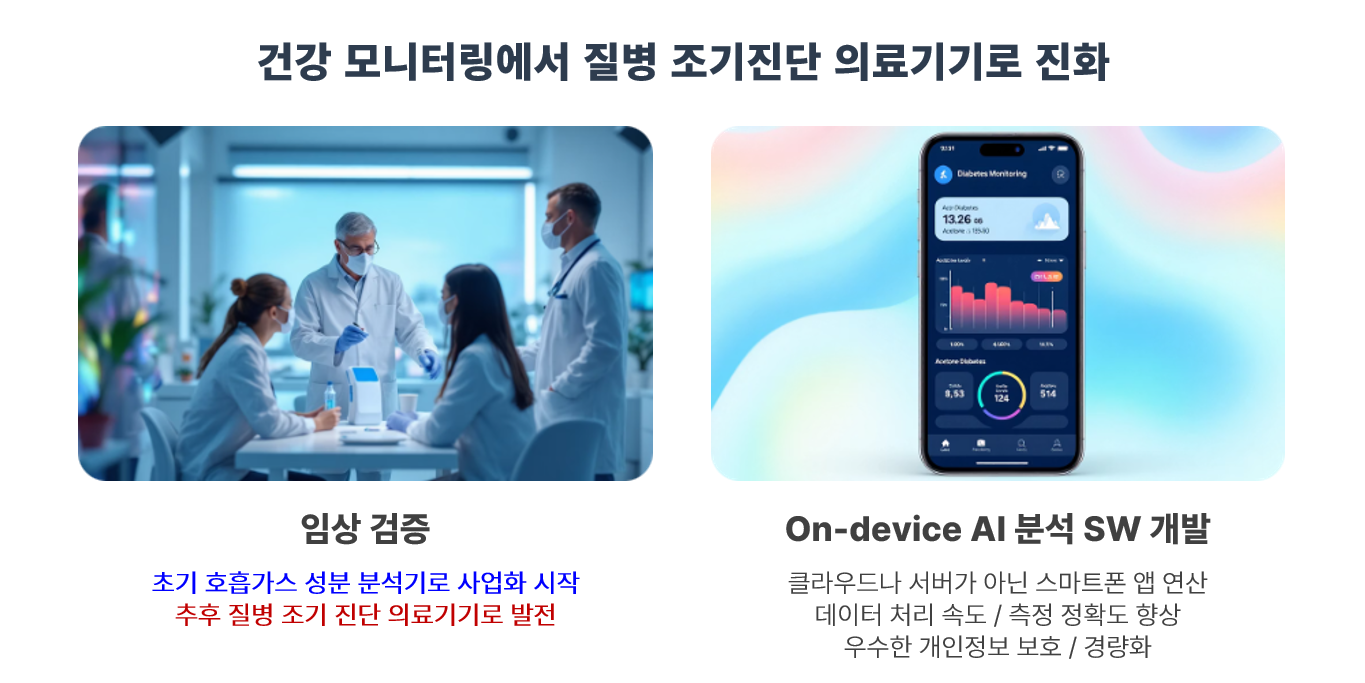
Innovative technology for diagnosing health through breath
A new paradigm for continuous health monitoring and early disease detection
Limitations of Conventional Health Monitoring
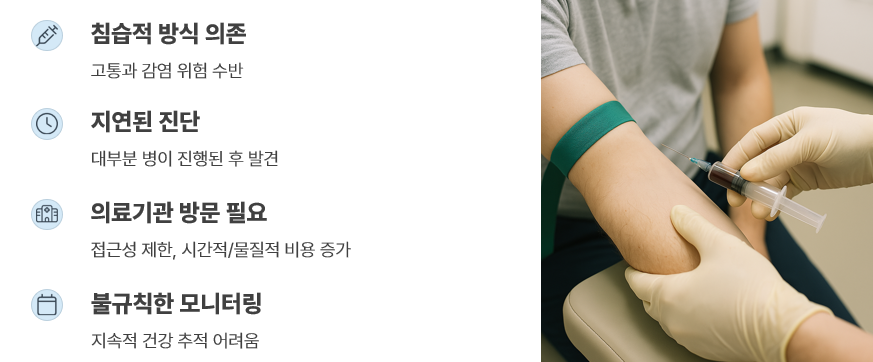
Non-invasive Real-time Health Monitoring System
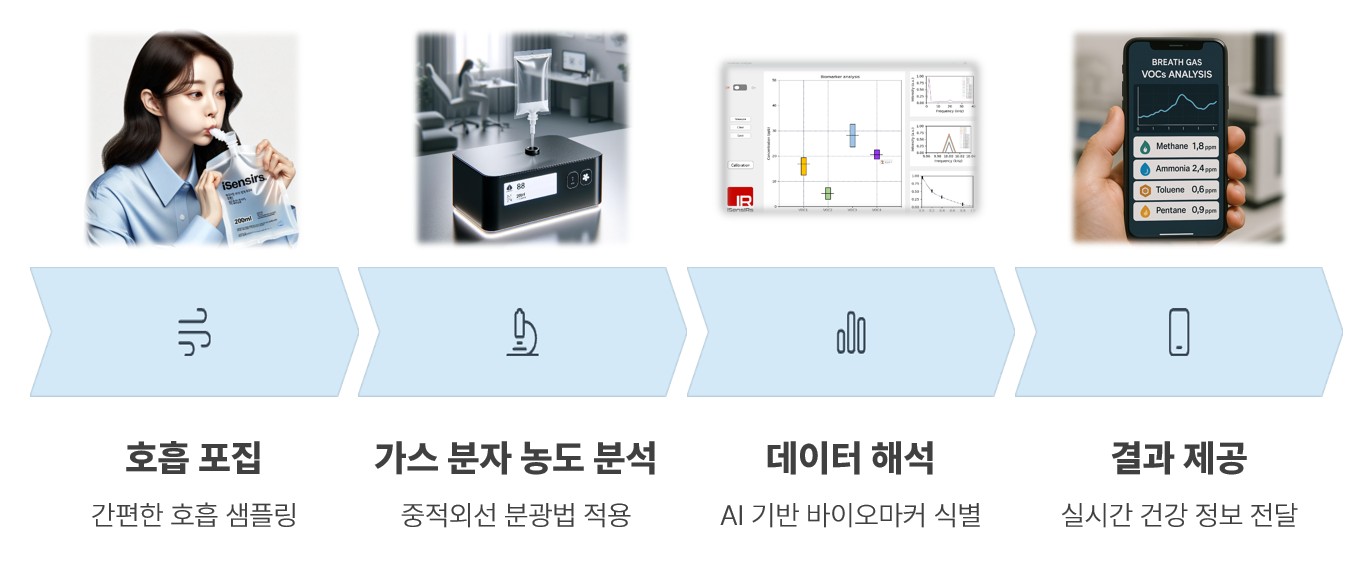
Generation of Volatile Organic Compounds and Exhaled Gas Mechanism
Principles of Disease-related VOC (Volatile Organic Compound) Generation
- Metabolic Abnormalities & Oxidative Stress
- When intracellular metabolic pathways function abnormally (e.g., excessive glucose breakdown in tumor cells), different metabolic byproducts are produced compared to normal tissues.
- During lipid peroxidation caused by increased reactive oxygen species (ROS), specific VOCs such as aldehydes, ketones, and alcohols are generated.
- Inflammatory Response & Immune Cell Activation
- Cytokines and enzymes (e.g., COX, LOX) secreted at inflammation sites break down adjacent cell membrane lipids, forming new VOC profiles.
- Microbial Metabolism
- Microbiota in the lungs, oral cavity, and intestines also emit specific VOCs (sulfur compounds, aldehydes, fatty acid methyl esters, etc.) that reflect disease states.
Blood Transport & Alveolar Transfer
- Extracellular Fluid Diffusion: Generated VOCs are secreted into the interstitial fluid beyond the cell membrane.
- Capillary Absorption: The dense capillary network around the alveoli absorbs VOCs into the bloodstream.
- Alveolar Transfer: When the partial pressure of VOCs in the blood exceeds that in the alveolar gas, they move into the alveolar space as gases.
Excretion through Respiration
- Ventilation Cycle:
- Inhalation: Air enters the alveoli at the end of the bronchi,
- Exchange: Gas exchange of VOCs, O₂, CO₂, etc. occurs simultaneously between alveoli and capillaries,
- Exhalation: VOCs accumulated in the alveoli are expelled through the mouth and nose during exhalation.
- End-tidal Breath Collection: The air at the end of exhalation most accurately reflects blood VOC concentration, so collecting at this point increases analytical precision.
Breath Gas Component Analyzer
Product Overview
iSensIRs' breath gas component analyzer is an ultra-sensitive gas sensor system utilizing QCL-based TDLAS spectroscopy in the mid-infrared range. Proprietary light sources, automated sampling, and AI analysis software are integrated to monitor even trace biomarkers in the ppb range in real time.
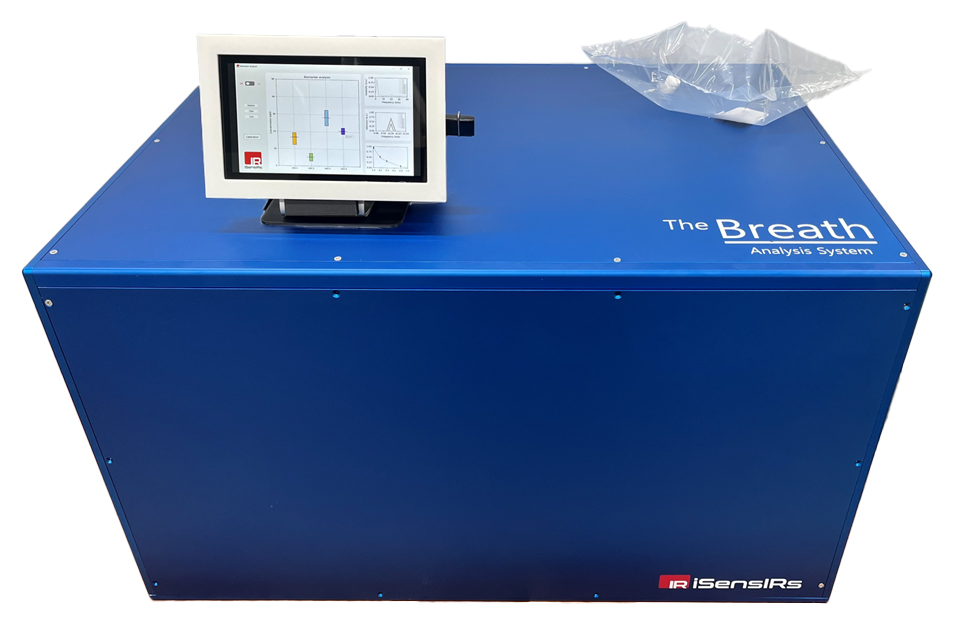
Core Technology Components
- Mid-infrared QCL-TDLAS Spectroscopy System
- DFB QCL-WMS : Selective detection of specific compounds
- External Cavity-FP QCL : Wide wavelength sweep enables multi-VOC spectral profiling
- Precision Sampling Module:
- Automated moisture removal pump (proprietary patent): Efficiently removes moisture generated during breathing to prevent sensor contamination
- End-tidal Breath Collection: Automated device precisely collects end-tidal breath showing peak concentrations
- Ultra-sensitive Real-time Analysis Software
- Real-time detection of a few ppb within 10 seconds: Measures trace VOCs in the 1–100 ppb range within 10 seconds
- On-device AI: High accuracy classification and prediction of biomarkers with on-device AI, immediate alerts and reports generated on site
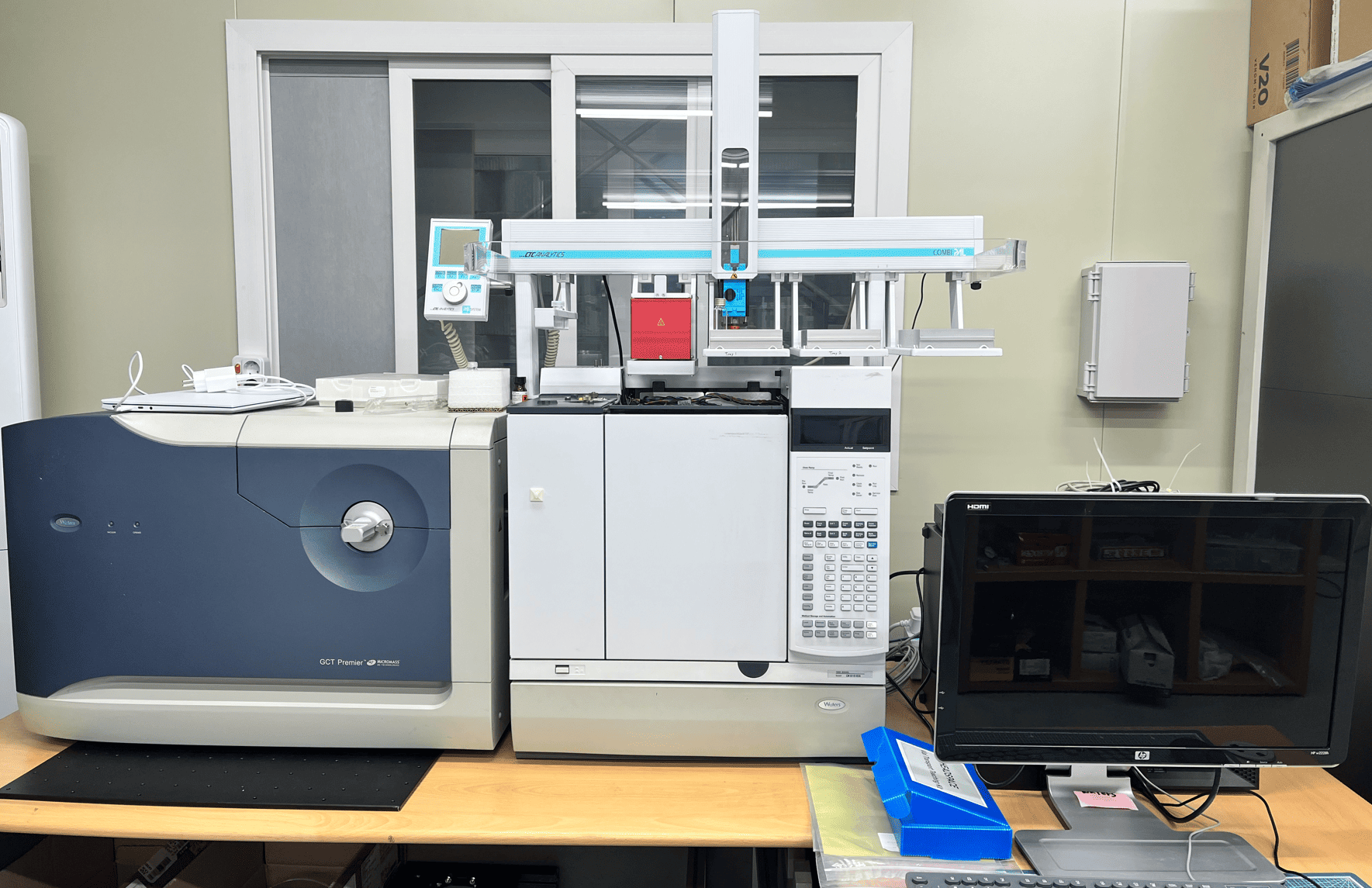
Gas Chromatography Mass Spectrometer (GC-MS)
Model: Agilent GC & Waters MS with Auto-sampler Sample type: Gas type
Benefits of Introduction
- Non-invasive & Convenient
- Obtain precise indicators with simple breathing, without blood sampling or tissue biopsy
- High Sensitivity & Selectivity
- Detection of trace volatile compounds at ppb levels
- Real-time Insight
- Analysis completed within 10 seconds, immediate decision support on site
- Scalability
- Expandable types of detectable VOCs by adding or replacing quantum cascade lasers
- Continuous feature enhancement through AI model updates
Differentiation of Core Technology
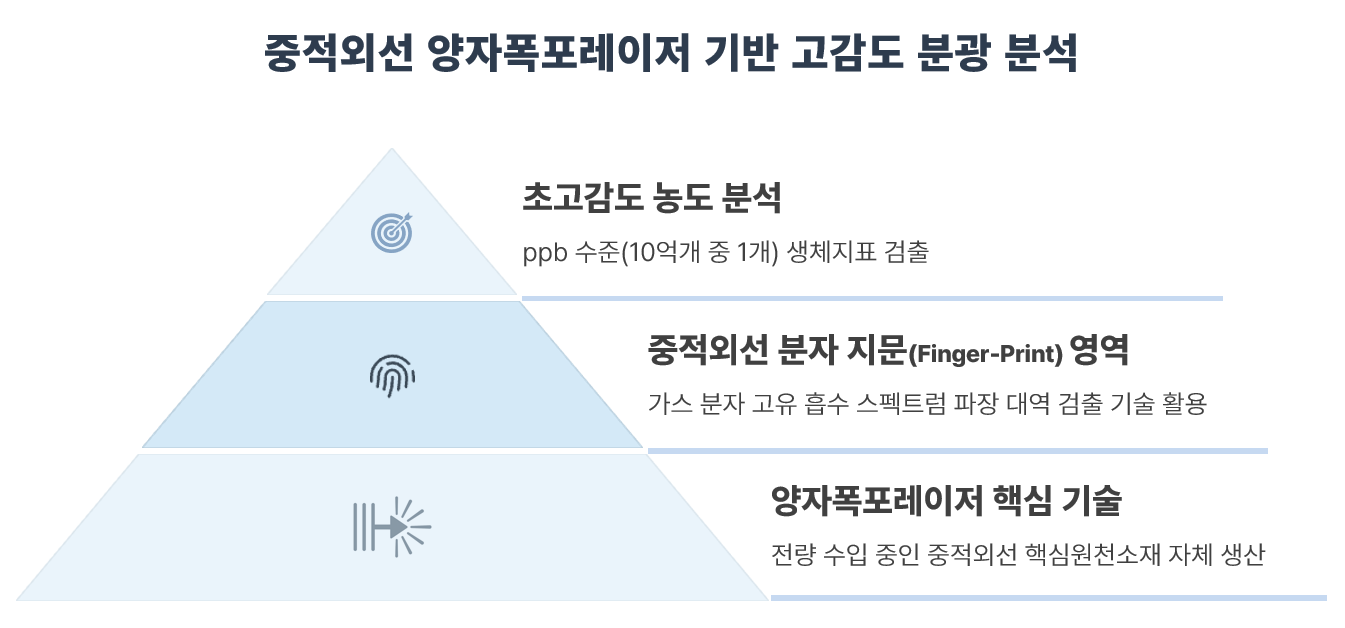
Advantages of Breath Gas Analysis
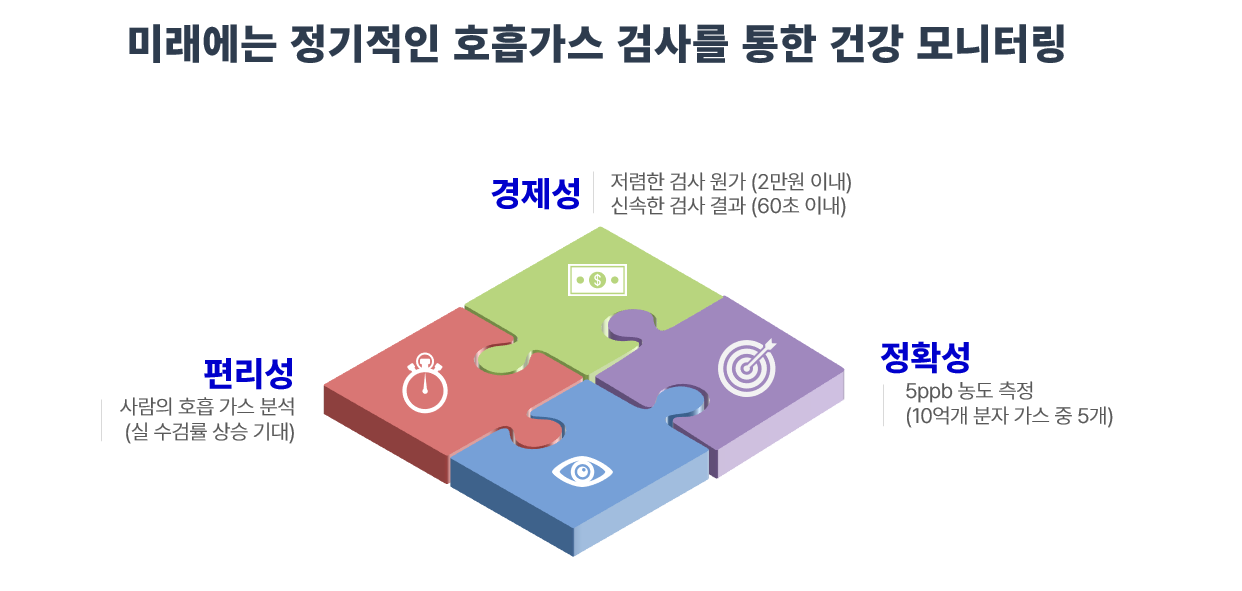
Applicable Diseases

Main Applications
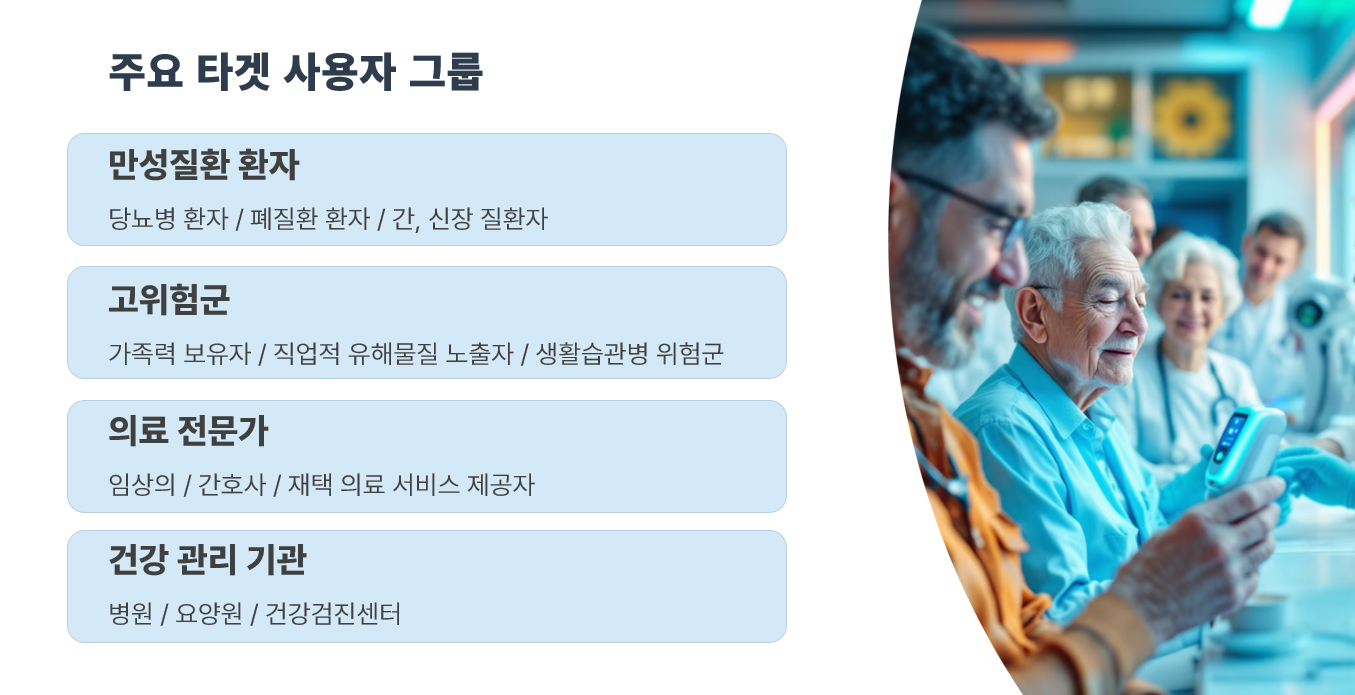
Initial Commercialization Plan
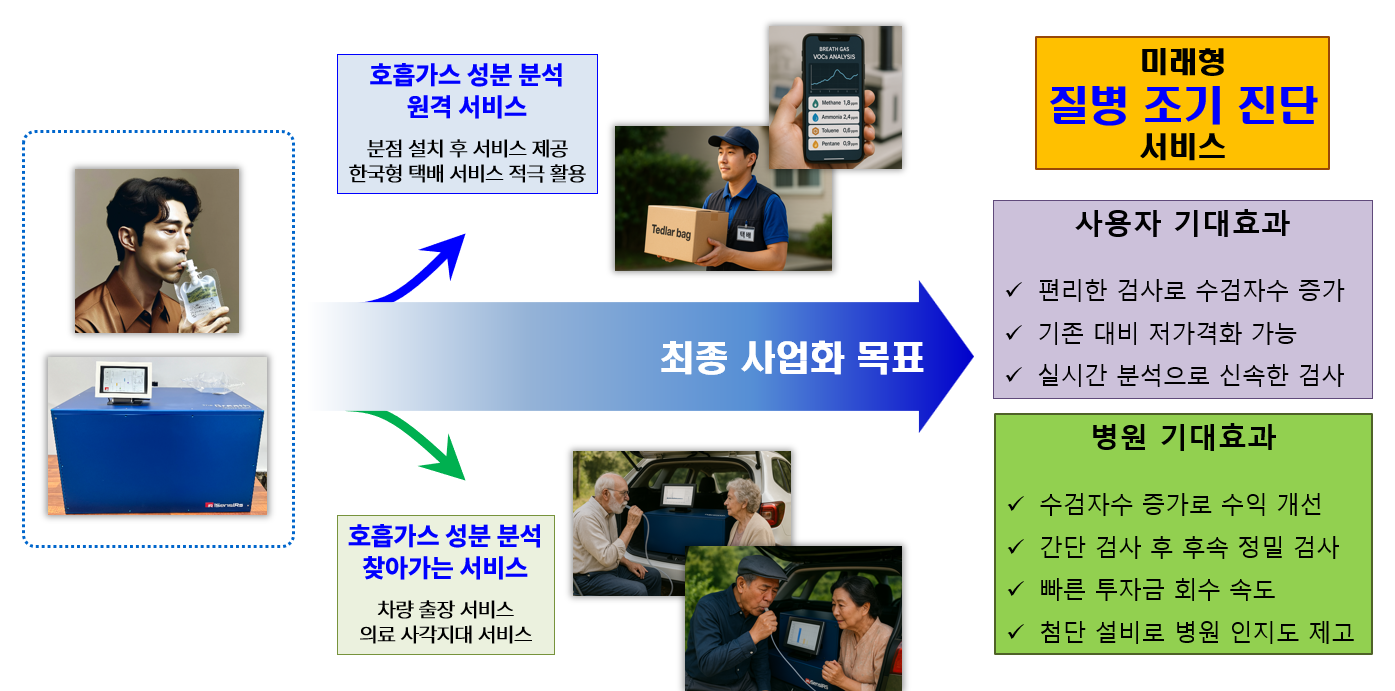
Additional Technology Implementation
